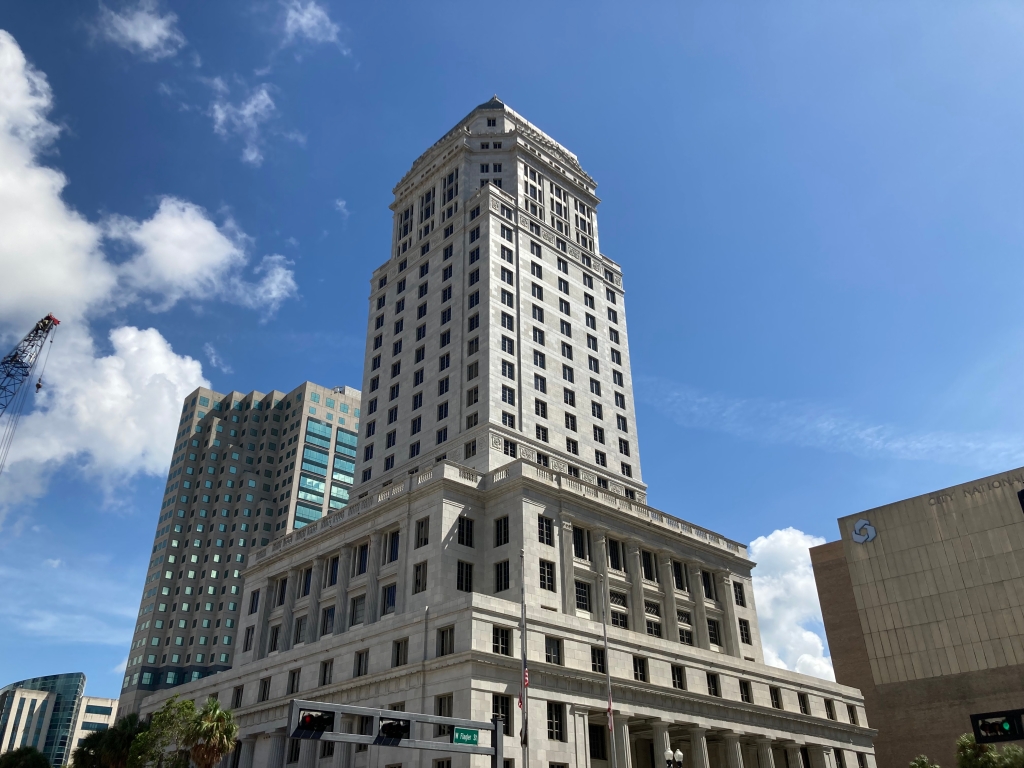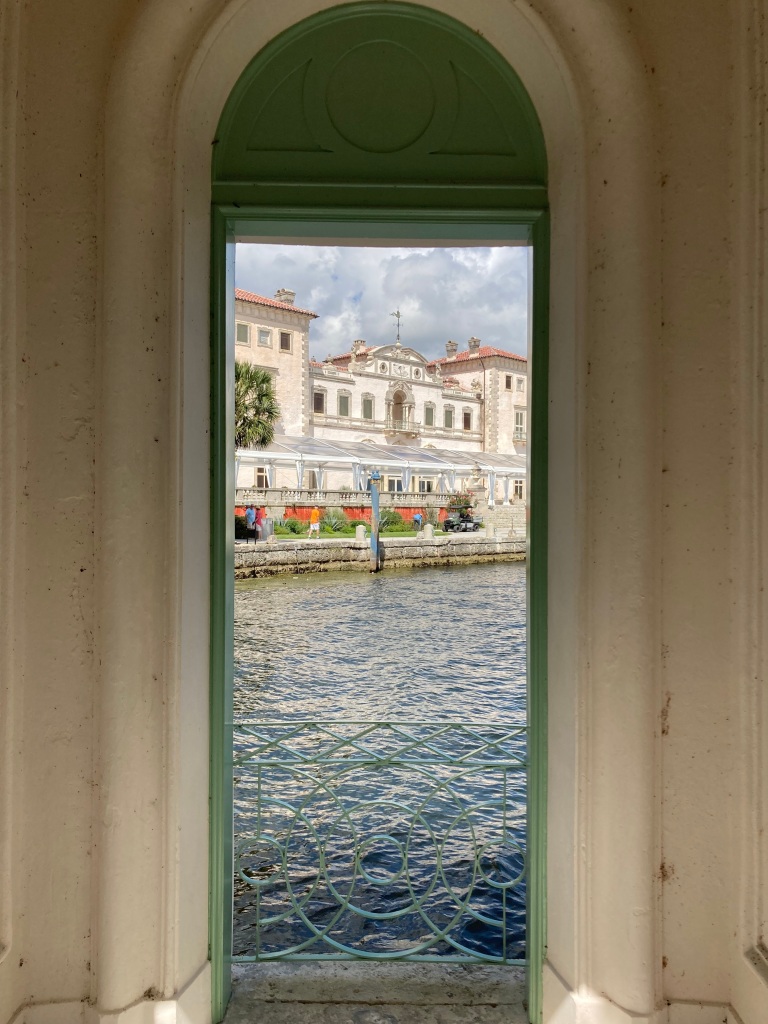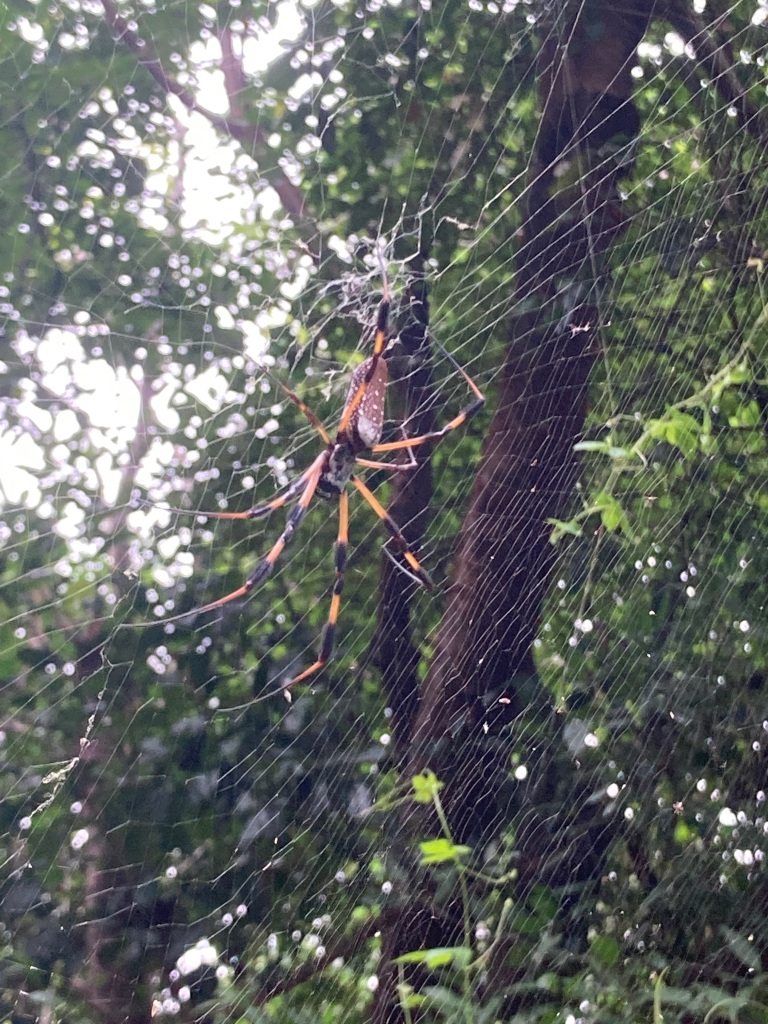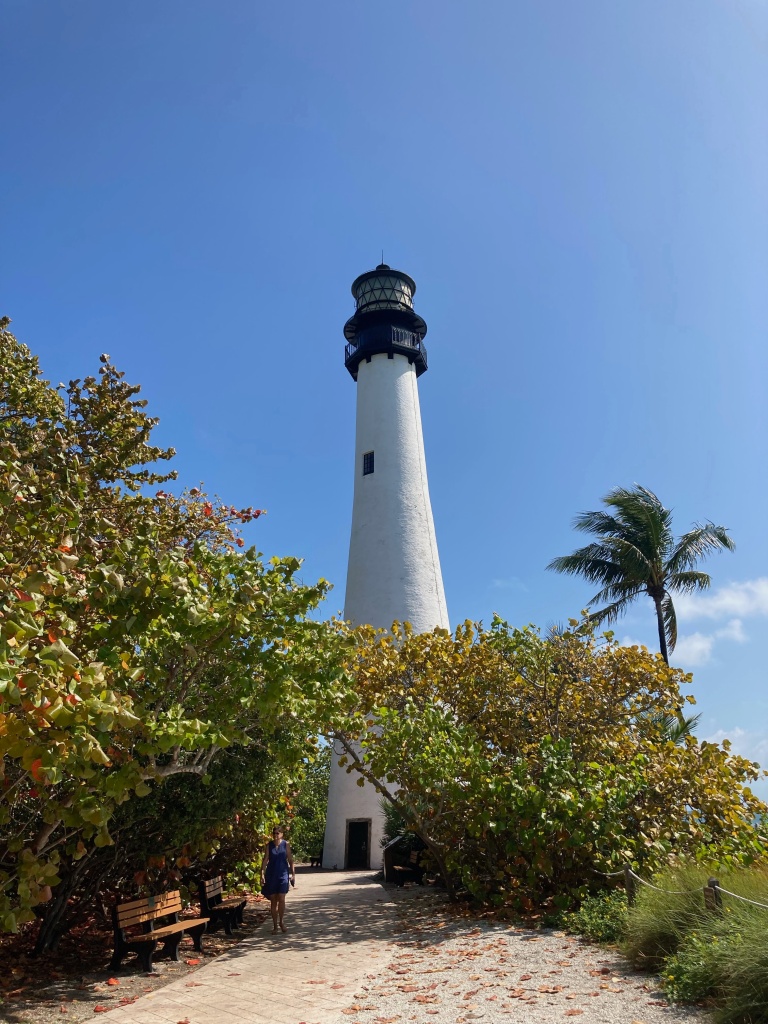
Gabriella Pena is a 19-year old entering her sophomore year at Florida International University, majoring in Marine Biology. She is not entirely sure what she wants to do after graduation, but what she is sure of is doing anything that involves travel.
Downtown as Text

Hilariously Awful
By Gabriella Pena of FIU at Downtown Miami on 08 September, 2021
People make out Miami to be this beautiful, luscious, gorgeous, subtropical city, with a melting pot of cultures from every part of the globe, accepting of anyone that comes our way. You can enjoy the beach even in the winter months as it is typically sunny year-round, and the nightlife is hard to beat. The amalgamation of all these characteristics makes Miami one of the best cities in the world.
At least that’s the good part of Miami.
What I just described only highlights the part of Miami that your average person might know. What many lack the knowledge of is the repulsive and sometimes comically embarrassing history of the city and its foundations.
My professor was walking me and my class over to the Miami-Dade courthouse. In the corner of the building there was plaque and a statue of a man. As I come to find out later from my professor’s lecture, that statue depicted Henry Morrison Flagler, a wealthy man who was a key contributor to the development of South Florida, particularly the Miami region. Unfortunately, this also means he contributed to the funding of segregation and segregated towns (i.e., “Colored Town”), being responsible for a large part of the racist history in South Florida. The plaque explained the origins of our county name, “Miami-Dade”. In the Second Seminole War, Major Francis L. Dade, leader of 110 U.S. soldiers, led his troop into an ambush of 180 Seminole warriors, leaving all but three U.S. soldiers dead. To honor Major Dade’s commitment to the U.S. and the U.S. army, the county of South Florida would be named “Miami-Dade”.
Looking back at the statue and plaque in front of this government building, I was getting secondhand embarrassment, something I never thought I would receive from two long-dead wealthy white men. I had proudly claimed this city to be my own, being born and raised in a thriving multicultural city. But no. I was standing there, confused as to how Miami started as something so different what it is now. So confused to the point where I was laughing to myself. A region funded largely by a man who exploited the labor of African Americans, and a county named after an incompetent army officer.
Miami leaves a lot to be desired, especially regarding its history; no one should be proud of the city’s foundations.
But what I can be proud of is what it has grown into today: a hotspot for multiple cultures and communities, a city that breathes in life to the people that call Miami home.
Overtown as Text

Comfort
By Gabriella Pena of FIU at Overtown on 22 September, 2021
I am not going to lie, for a large part of this visit to Overtown, I was bored. And sweating, at that. It felt like half of the places we visited were churches that weren’t open, and it became depressing to hear over and over again about the threat of gentrification looming over many institutions in Overtown and other non-developed regions in Miami.
Then we went on a lunch break to a place called Jackson Soul Food. A gem of a restaurant that is oftentimes forgotten about or even unknown to Miamians. As a matter of fact, many actively avoid this place due to Overtown’s reputation of being dangerous to visit.
I had been wanting to come here for a while, but never had the chance. Our class walked in, and by the looks of the customers that were already being served, you could tell that we were not the usual crowd to come in at the day and time that we did. Sitting down felt uncomfortable as the other customers were looking at us puzzled. I ordered food and so did my peers sitting at my table. While waiting, we talked. Usually, I’m not one to engage in small talk; my anxiety finds it difficult to open up about even the smallest things. But something was different here. The conversation between my classmates and I was surprisingly easy. It felt so painless talking amongst each other, even across tables while there was noise. Something about the atmosphere let my anxieties fall away.
And I think that that is something unique to only a handful of places. Places like Jackson Soul Food, where I can sit down and leave all my worries and doubts outside the doors. What I initially thought would be another agonizing experience of awkward silence and weird looks from strangers turned out to be an experience of relaxation, good food, and comfort.
Vizcaya as Text

Environmentalist (?)
By Gabriella Pena of FIU at Vizcaya on 20 October, 2021
Vizcaya is one of many popular locations in Miami visited by locals and tourists alike. Built from the mid-1910s to the early 1920s, James Deering had a vision of a Mediterranean revival waterfront villa surrounded by the greenery of Florida flora. Not only was Vizcaya intended to be his winter residence, he also created Vizcaya to protect the surrounding environment of the estate, including mangrove forests, coastal waters, and the animals that resided in and around the area. Deering was an avid conservationist.
However, there is a lot of irony when we talk about the so-called “conservationist” that is James Deering. He protected the land surrounding the estate, but that in itself requires to take down at least some area of habitat to place his winter home in. In addition, Deering made most of his fortunes from agricultural machinery. This isn’t to say that Deering is directly responsible for habitat destruction and/or deforestation among other environmental issues, but you can make the argument that Deering’s companies played some kind of role in these issues.
But this isn’t a post meant to slander the Deering name to the ground. I also want to look into how Deering used his wealth and how the millionaires and billionaires of today use it. One thing I noticed that was particularly different with Vizcaya from other wealthy estates in South Florida is how much foliage is involved in the architecture of the home. During my visit, there was not one step that I took where I didn’t see vegetation (or an object intended to appear as vegetation). The plant life of South Florida is embedded in the estate. Unfortunately, the same cannot be said for the South Florida mansions of today. When I drive by luxury homes and communities (i.e., Star Island, Palm Island, etc.), the only visible flora are the shrubs and palm trees bordering their homes, from one mansion to another. Not an inch of green in the interiors of these newly constructed estates.
While I have given my criticisms about Deering, I also want to give him credit where credit is due. It may seem paradoxical that a developer of this much wealth cares about the environment, but that is more than what modern-day industrialists can say.
South Beach as Text

Reflection of the People, Reflection of the City
By Gabriella Pena of FIU at South Beach on 03 November, 2021
Walking through South Beach felt like entering and leaving different worlds with each step. A big part of that is the architecture that makes up the neighborhood. Styles of buildings include Mediterranean Revival, Georgian, Miami Modern, and Art Deco. Art Deco is of particular interest; not only does the Art Deco neighborhood face the threat of climate change (and likewise, so do all other architectural styles of South Beach), but Art Deco faces the additional threat of developers encroaching on these properties that are nearly 100 years old. Thankfully, most of the buildings have been preserved as the neighborhood was added to the National Register of Historic Place in 1979, protecting the vast majority of the Art Deco buildings in Miami (“ART DECO IN MIAMI BEACH GETS CITY PROTECTION RULE”). Before 1979, the buildings were under constant threat of development. Even now with its protections, that doesn’t mean that the buildings are now untouchable. According to the Miami New Times, an ordinance is being considered that would “eliminate the review board process” for property that developers are looking to raze, affecting what the city staff like to call “architecturally significant” homes (Cardona). This could affect the architectural landscape of South Beach, losing the eclectic-ness (for lack of a better word) of the neighborhood.
The architecture that graces the streets of South Beach could be a good analogy to describe the people of Miami: beautiful, eclectic, erratic. With the largest Art Deco neighborhood in the world, neighborhoods sprawled with the nautical characteristics of Miami Modern architecture, the red tiles of Mediterranean revival, and arches of Georgian buildings, the styles vary immensely as you walk along past what used to be called Ocean Beach. Upon further reflection, we are reminded by the architecture and the people that Miami offers something unique to the world.
Citations:
- “ART DECO IN MIAMI BEACH GETS CITY PROTECTION RULE”. Nytimes.Com, 1986, https://www.nytimes.com/1986/07/15/us/art-deco-in-miami-beach-gets-city-protection-rule.html.
- Cardona, Alexi. “Demolition Ordinance Reignites Battle Over Historic Preservation In Miami Beach”. Miami New Times, 2019, https://www.miaminewtimes.com/news/miami-beach-planning-board-votes-down-demolition-ordinance-for-historic-homes-11274457.
Deering as Text

Sacred Ground
By Gabriella Pena of FIU at Deering Estate on 17 November, 2021
It is ironic how I, a South Floridian, have never heard about the Tequesta tribe until taking this class. While they weren’t as big as other tribes in South Florida (i.e., Calusa), it still surprises me that the Tequesta were never acknowledged during my time in elementary, middle, or high school. What’s more, many sites where the Tequesta were known to reside and/or utilize have either been built over or closed to the public.
I was fortunate enough to receive access to a few of these sacred and historical places left by the Tequesta. Visiting these places gives you a look into past lifestyles and economy. Even seemingly trivial things like ancient trash mounds (a.k.a. middens) “[provide] important information regarding past… lifeways” and helps to “reconstruct past environments, and to understand… occupation and land use patterns through time” (“Aboriginal Shell Middens”). In addition to the midden, visiting the Tequesta Cutler Burial Mound, one of only two unearthed Tequesta burial sites (the other being in Broward County[2]), made me think about a couple of things.
A lot of questions popped up in my mind: Why am I only hearing about this tribe as of now? Where was this information when I was enrolled in primary school? Why are these places closed off from the public? There were multiple tribes native to Florida that were taught in my curriculum (i.e., Seminole, Calusa, Apalachee, etc.), and yet what was closest to home completely missed me and my classmates. While I still don’t know the answer to these, I feel it important to bring up that sites such as this are few and far between (which now that I come to think of it, might be why I was never taught any of it in elementary school)— and because of the scarcity, it’s important not only to protect the physical history and such, but to create a more informed public, teaching whenever we can.
Citations:
- “Aboriginal Shell Middens”. Aboriginalheritage.Tas.Gov.Au, https://www.aboriginalheritage.tas.gov.au/cultural-heritage/aboriginal-shell-middens.
- “Parkland To Show Lost Secrets Of Tequesta”. NBC 6 South Florida, 2015, https://www.nbcmiami.com/news/local/parkland-to-show-lost-secrets-of-tequesta/102043/.
Everglades as Text

Everglades
By Gabriella Pena of FIU at Everglades National Park on 19 January, 2022
One could assume that sloughing in a swamp is anything but enjoyable— wading through “dirty” water (referring to periphyton (Dutta et al.)), risking falling into holes, interacting with possibly dangerous wildlife.
But really, the experience became so much more than what I had feared in the back of my head. The scenarios I worryingly played over and over in my head diminished to nothing. My brain had moved on to other things: I was one of only so many to experience the cypress dome of the Everglades swamps, interacting with untouched earth.
And with this reflection I want to emphasize that time and nature are sacred. They are things we take for granted. Time, we never have enough of. Nature, often lost to development. It’s very rare in today’s world that we get a moment to ourselves, let alone a moment surrounded by the natural world in its purest form.
This time alone with myself allowed me to pay attention to things I normally wouldn’t have noticed. Patches of cypress oil on the surface of water, dissolving and shattering like glass with just a touch, the air plants attached to the cypress trees and the commensalism between each other (of course much of this lovely information thanks to our park rangers), the slow transition from sawgrass to underwater plants as we entered the dome. What originally started as a slight unease turned into a relaxed state of mind, a reached plateau. Humans are all too often carried away with thoughts of errands being run, work to be done, deadlines to satisfy. But if we take a moment of peace and quiet surrounded by what was here before man, then we see that we’re distracting ourselves from things worth appreciating.
Citations:
- Dutta, Manas et al. “Periphyton Growth On Natural Substrates And Its Efficacy In Aquaculture”. Aquafind.Com, http://aquafind.com/articles/Periphyton-Growth-In-Aquacultue.php.
Coral Gables as Text

The City Beautiful (and Ugly)
By Gabriella Pena of FIU at Coral Gables on 02 February, 2022
In light of George Merrick’s racist past, the University of Miami removed his name from several structures and spaces associated with the institution (Margol). Merrick’s name had been dampened in the history of the university he founded, almost hidden from public view. Learning this during our lecture, one of my classmates mentioned that “it sort of erases history”, of course referring to this “cleansing” of the history of UM and Coral Gables.
While I can understand this point of view, I’m using this reflection to make something clear: acknowledging the history of something while rebuking parts of it can be done without denying or “erasing” any aspects of said history.
Merrick did not just contribute to the University of Miami. He was also a key developer in the city of Coral Gables, planner and builder of “the City Beautiful” (Lauredo). Ironic that a nickname like that be given to a city with such ugly beginnings. In Merrick’s plans for Coral Gables, he “proposed ‘a complete slum clearance… effectively removing every negro family from the present city limits’” (Mohl). While he had plans to make a separate “negro village” for those displaced, it is very evident from Mohl’s text that Merrick had no hesitations displacing them, and it even seem preferred to do so rather than putting any effort into creating a multicultural city. In addition to displacing black people, black laborers were also exploited during the making of Coral Gables, receiving much less compensation than their white counterparts would for their labor.
And it’s because of this undermining of black people and black communities by Merrick that we see UM renaming their buildings and city historians reprimanding his past actions.
UM and the City of Coral Gables will never be able to completely dissociate themselves from Merrick. To do so would be the city denying much of its own history. However, realizing these missteps from the past allows us to see and honor those who instead have made a positive impact on communities.
Citations:
- Margol, Ian. “University Of Miami Taking Steps To Rename Buildings Honoring Those With Racist Pasts, Such As George Merrick”. WPLG, 2021, https://www.local10.com/news/local/2021/05/05/university-of-miami-taking-steps-to-rename-buildings-honoring-those-with-racist-pasts-such-as-george-merrick/.
- Lauredo, Malcolm. “The City Beautiful Movement – Coral Gables Museum”. Coral Gables Museum, 2018, https://coralgablesmuseum.org/portfolio-item/the-city-beautiful-movement/.
- Mohl, Raymond. “Shadows In The Sunshine: Race And Ethnicity In Miami”. Digitalcollections.Fiu.Edu, http://digitalcollections.fiu.edu/tequesta/files/1989/89_1_04.pdf.
Wynwood as Text

The Situation Room
By Gabriella Pena of FIU at Wynwood on 23 February, 2022
“The Situation Room” by Will Ryman is made of life-size black charcoal figures, the sculpture depicts the dramatic iconic moment of the covert Navy Seal Operation that led to the killing of Osama bin Laden, as President Obama and his security council (including then Vice President Joe Biden and Secretary of State Hillary Clinton) view the secret military operation by satellite in the basement of the West Wing of the White House (“WILL RYMAN / The Situation Room, 2014 – Exhibitions – Margulies Collection”). This was just one of many pieces in the Margulies collection that caught my eye. And while many pieces are worth sharing, I felt it necessary to highlight this piece in my reflection, considering how it connects to the circumstances of today’s world.
Made in 2014, Will Ryman’s sculpture is not just recreating a photo in physical form. The Situation Room is depicting conflict, violence, and power. And it is no coincidence that the piece is made from charcoal, a dark gray powder, similar in appearance to gunpowder, a material used in explosives and weaponry.
“I thought of [Rodin’s] Burghers of Calais, and all the conflicts throughout history over power and religion and energy and territory,” Ryman says. “That photograph reminded me of a Greek chorus narrating this conflict that’s been going on for the last 60, 70 years, which seems to be repeating itself over and over again” (Stoilas). Though this statement was made December of last year, this notion of repeating conflicts is especially true to current times with the Russia-Ukraine conflict. While many think that this is the first of conflict between Russia and Ukraine, there was also a large-scale conflict back in 2014 between the two neighboring countries following the annexation of Crimea that year (Fisher).
War and repeated conflicts is not a foreign concept to most countries, especially Russia and the US. The Situation Room holds a mirror those in our world who are in power. Those in power who commandeer entire armies from the safety of their government buildings, putting lives at stake. It is a reminder of the destructive nature of war.
Citations:
- “WILL RYMAN / The Situation Room, 2014 – Exhibitions – Margulies Collection”. Margulieswarehouse.Com, 2021, https://www.margulieswarehouse.com/exhibitions/will-ryman-the-situation-room-2014?view=slider#5.
- Stoilas, Helen. “Walk Into The White House Situation Room With Will Ryman’s Dramatic Installation”. The Art Newspaper – International Art News And Events, 2021, https://www.theartnewspaper.com/2021/12/03/will-ryman-situation-room-margulies-collection-miami.
- Fisher, Max. “Everything You Need To Know About The 2014 Ukraine Crisis”. Vox, 2014, https://www.vox.com/2014/9/3/18088560/ukraine-everything-you-need-to-know.
Key Biscayne as Text

Underground Railroad
By Gabriella Pena of FIU at Key Biscayne on 16 March, 2022
It’s funny to see Florida dissociate themselves from the controversial parts of American history. Too often I’m hearing about stories of the underground railroad, slaves escaping from the South. And we always here about these stories taking place in Georgia, South Carolina, Maryland, Virginia, etc., states much older in U.S. history than Florida. So, we would assume that Florida wasn’t a part of antebellum history, right? Apparently the opposite seems to be true. As many as 6,000 slaves had escaped to the Bahamas from southeast Florida. Bill Baggs State Park is one of two designated National Underground Railroad Network to Freedom sites in Florida (Tatro). Several hundreds of slaves escape from here in search of freedom in Red Bays, Bahamas and its surrounding areas. This network in south Florida even has its own name, the Saltwater Railroad
I can’t help but wonder why I was never taught about the role that south Florida played in the freedom of slaves before the Civil War. Is it shame about the being previously involved with Confederates? Why does Florida try to separate itself from that era of history? But in a way it shouldn’t be something to be ashamed of. It was the good part of antebellum history, after all. I guess it all ties back to once again, dissociating from the uglier parts of history.
Citations:
- Tatro, Carrie. “The Saltwater Underground Railroad Moved Slaves From Florida To Freedom”. Howstuffworks, 2021, https://history.howstuffworks.com/historical-events/saltwater-underground-railroad.html
- Winsboro, Irvin D. S., and Joe Knetsch. “Florida Slaves, the ‘Saltwater Railroad’ to the Bahamas, and Anglo-American Diplomacy.” The Journal of Southern History, vol. 79, no. 1, Southern Historical Association, 2013, pp. 51–78, http://www.jstor.org/stable/23795403.
- “South Florida’s Connection To The Underground Railroad”. NBC 6 South Florida, 2019, https://www.nbcmiami.com/news/local/south-floridas-connection-to-the-underground-railroad/2023004/.
Coconut Grove as Text

Humble Beginnings
By Gabriella Pena of FIU at Coconut Grove on 30 March, 2022
Learning about Coconut Grove’s The Barnacle was a breath of fresh air for me. It is not uncommon to hear about city developers in U.S. and world history encroaching on the land of Native Americans without remorse, and oftentimes without being on good terms.
What was also a breath of fresh air was hearing that one of the key founders of Coconut Grove was Ralph Middleton Munroe, a comfortably middle-class man, much different from the typical upper-class, trust fund baby developers (“Ralph Middleton Munroe”). Munroe was born and raised in Staten Island, New York. His father, an inventor, was friend with conservationists like Ralph Waldo Emerson and Henry David Thoreau. Having them around in his life would influence his lifestyle and ideals as an adult. Munroe met his first wife, Eva Hewitt in Staten Island, got married and had children. Unfortunately, Hewitt developed tuberculosis. Munroe moved to South Florida in hopes that the warmth of the city would help to treat her disease.
The reason I discuss Munroe and his life is because his character is that of something which we don’t see so often in the history books. I’ve grown sad and tired of hearing all the devastating stories of colonization, bloodshed, and war. But Munroe’s life is one of good intentions. A family man, a friend to the Seminoles, a researcher, environmentalist, boat builder, and the list goes on.
“Coconut Grove will never be the same without him. His marvelous personality… made him a kind of cornerstone in the community, and cornerstones are gone, society loses a great deal more than it usually appreciates” (Fairchild).
Citations:
- “Ralph Middleton Munroe”. Everglades.Fiu.Edu, http://everglades.fiu.edu/reclaim/bios/munroe.htm.
- “The Barnacle”. Historymiami.Org, 1977, http://www.historymiami.org/wp-content/uploads/documents/update-v4-n5.pdf.